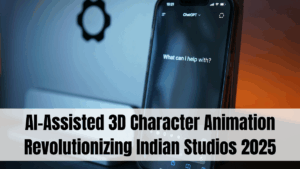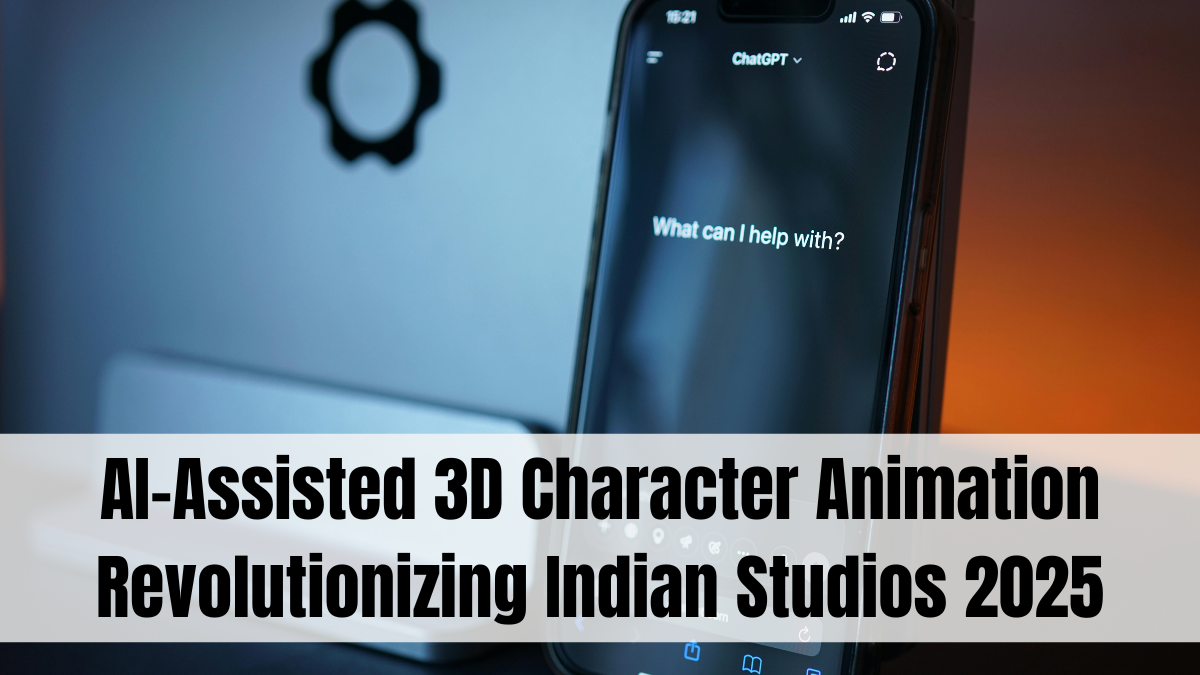The animation industry in India is experiencing a technological revolution, with AI-assisted 3D character animation tools enabling studios to create more realistic, complex, and efficient animations. In 2025, these tools are empowering artists by automating repetitive tasks, enhancing creativity, and shortening production timelines, driving India’s animation sector toward global competitiveness.
This article delves into the impact of AI animation tools India 2025, spotlighting innovations and adoption by top studios.

What Are AI-Assisted 3D Animation Tools?
AI-assisted 3D animation tools leverage machine learning algorithms to automate parts of the animation process such as:
-
Motion capture cleanup and enhancement
-
Facial expression synthesis
-
Automatic rigging of characters
-
Physics-based movement simulation
-
Style transfer and rendering optimization
These tools reduce manual workload while allowing animators to focus on storytelling and design.
Benefits for Indian Animation Studios
-
Increased Efficiency: AI reduces time-intensive tasks like keyframe adjustments and lip-sync.
-
Higher Quality Output: AI enhances subtle motion details, creating lifelike characters.
-
Cost Reduction: Automation lowers production costs, making projects more viable.
-
Creative Flexibility: Artists can experiment more with styles and movements with AI assistance.
-
Scalability: Studios can handle larger projects or multiple series simultaneously.
These benefits support the rapid growth of India’s animation exports and content creation.
Leading AI Animation Technologies in Use
-
DeepMotion: AI-driven motion capture and physics simulation tool.
-
Adobe Character Animator: Uses AI for real-time facial tracking and animation.
-
Autodesk Maya with AI Plugins: Integrates machine learning to accelerate rigging and rendering.
-
Eisko: AI-powered 3D face scanning and animation.
-
NVIDIA Omniverse: Collaborative AI platform for 3D content creation and simulation.
Indian studios are integrating these technologies to streamline workflows.
Case Studies: Indian Studios Leading with AI Animation
-
Studio A: Reduced production cycle by 40% using AI-enhanced rigging.
-
Studio B: Leveraged AI for realistic crowd animation in a feature film.
-
Studio C: Created a virtual influencer powered by AI-generated facial animations.
These success stories demonstrate AI’s role in elevating India’s animation quality and output.
Challenges and Future Prospects
-
Skill Development: Need for training animators to work alongside AI tools effectively.
-
Integration Complexity: Incorporating AI into existing pipelines requires investment and change management.
-
Data Requirements: AI models need high-quality motion and facial data for best results.
-
Ethical Use: Responsible use of AI-generated likeness and animations to avoid misuse.
Despite challenges, the outlook for AI-assisted animation in India remains highly optimistic.
What to Expect in Animation by End of 2025
-
More AI tools offering real-time collaboration for remote teams.
-
Increased use of AI in storyboarding and script-to-animation generation.
-
Greater fusion of AI animation with AR/VR experiences.
-
Expansion of AI-powered animation to gaming and education sectors.
India is poised to become a major hub for AI-driven animation innovation.
FAQs
How does AI assist in 3D character animation?
By automating rigging, motion capture cleanup, facial expression generation, and rendering enhancements.
Are Indian animation studios adopting AI widely?
Yes, many leading studios have integrated AI tools to boost productivity and creativity.
Does AI reduce the need for human animators?
No, AI assists animators but human creativity remains essential for storytelling and design.
Can AI animation tools create realistic facial expressions?
Yes, AI models trained on real data can generate highly realistic facial movements.
What skills do animators need to work with AI tools?
Knowledge of AI software, understanding of data input, and adaptability to new workflows.
Click here to know more.
